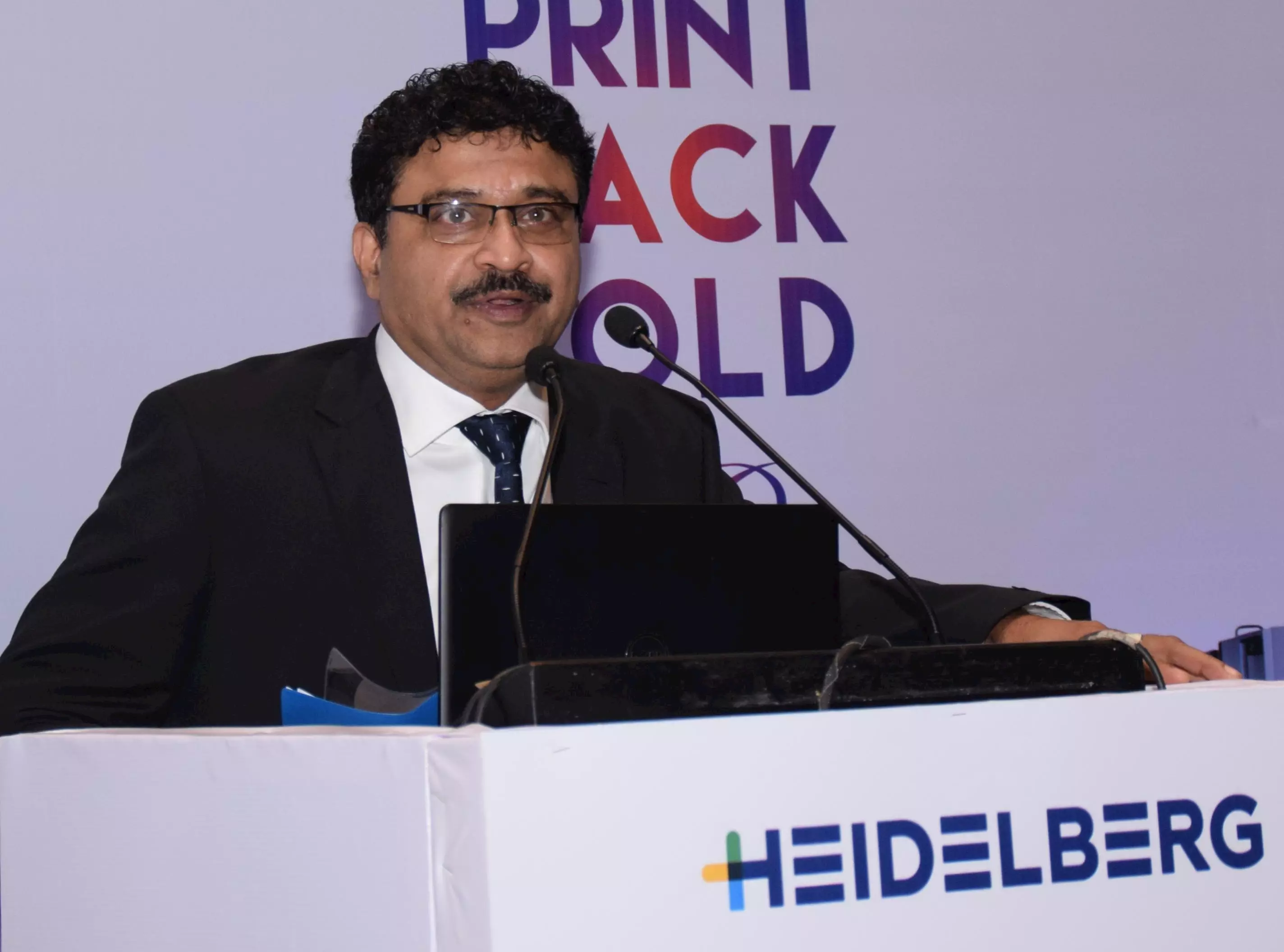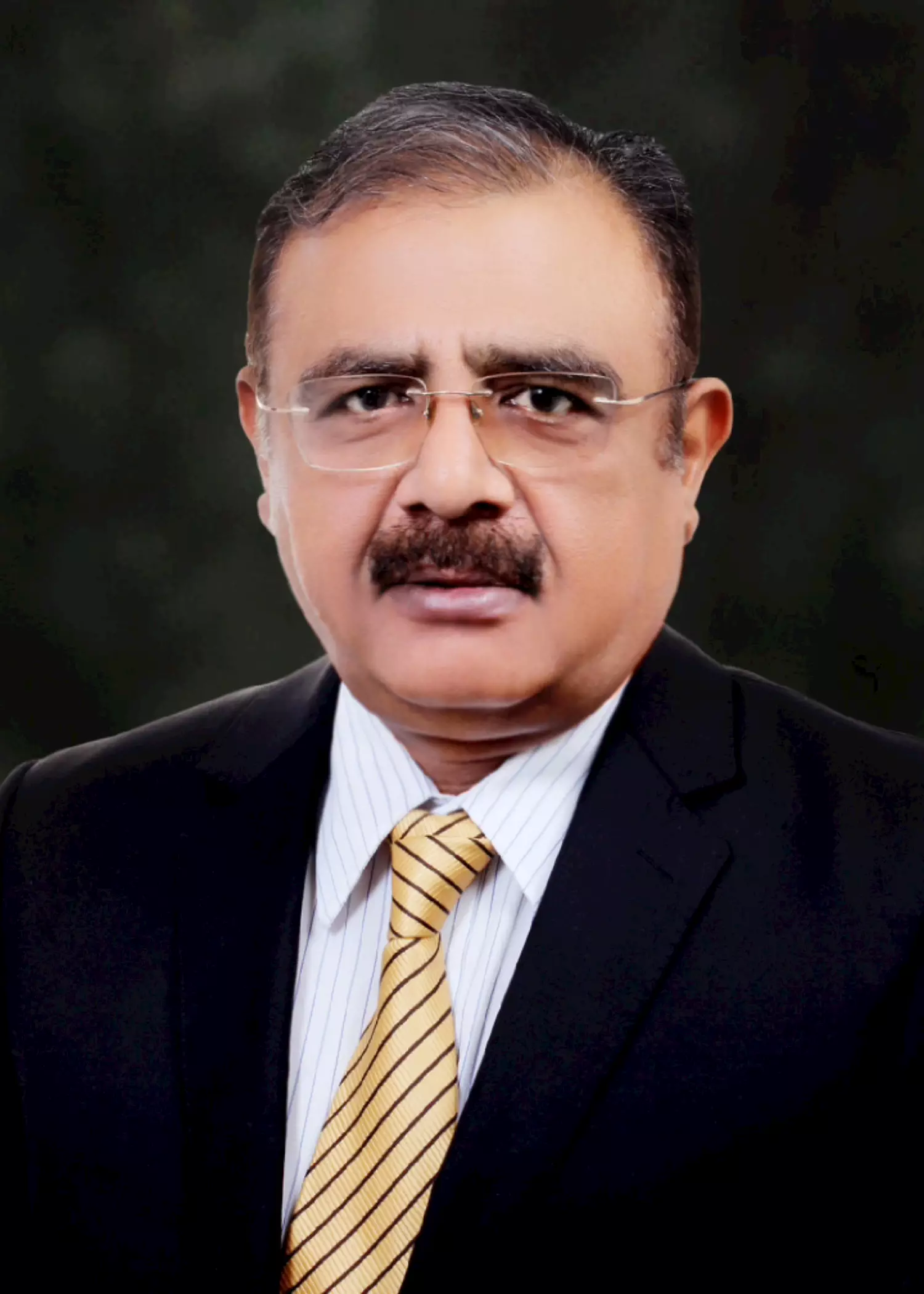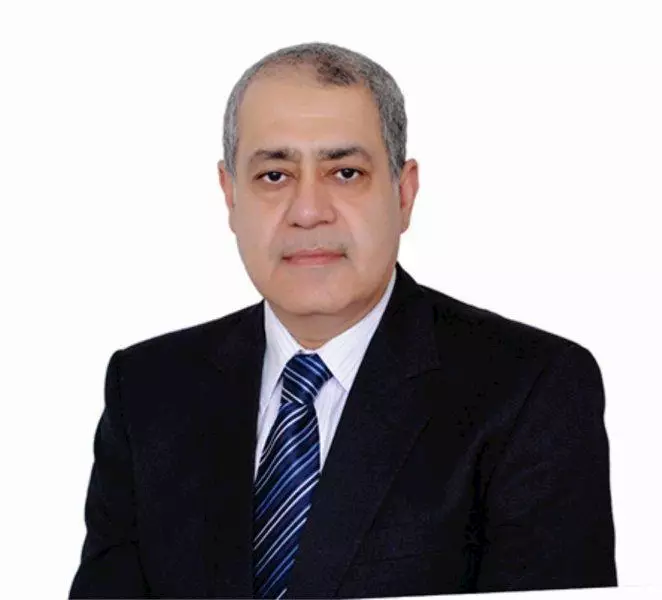Sheetfed’s progress in spite of tough 2017 - The Noel D'Cunha Sunday Column
It has now been more than a year since demonetisation and less than a year since GST. So it’s a good point to look at what’s transpiring in the sheetfed offset market in India.
The Sunday Column speaks to the Big Five manufacturers in the sheetfed offset segment and grasps the significant developments or announcements in 2017 in lieu of the estimated growth in packaging at 8% and a bottomline reduction for the industry in excess of 20-25%.
27 Jan 2018 | By Noel D'Cunha
Two years ago, Ahmedabad’s Le Griffe printed 68 jobs in a 12-hour shift averaging 9.97 mins per job, with wastage of not more than 10-15 sheets. It used the two-year-old five-colour plus coater HUV K Dry, Komori Lithrone press, the first HUV press in Gujarat, to print 680 copies of a 272-page book plus the cover. Le Griffe specialises in brochures, catalogues, posters, direct mail and direct marketing mailers, point-of-purchase displays, packaging, art reproductions, museum prints, manuals, and books.
This is the trend in our industry. Increase in the variety of print jobs and reduction in run lengths. Here automation becomes an absolute need – quick makeready, changeover, inking systems, etc.
To share one more example, there’s Zaware Creative Enterprises in Pune. In 1999, it was the seventh company in the city to have a four-colour press. Fast forward to 2017, the commercial printing firm offers everything a customer wants, from spot UV, aqueous coating to die-cutting, because, “clients will not accept any variations in print,” says, Rahul Zawarre, who is at the helm at Zaware Creative. He invested in a new Heidelberg SM 74 five-colour press with Prinect workflow and Heidelberg Suprasetter CTP. The company also embarked on a major government project, where it delivered printed material to 1,593 schools. For this, Zaware printed 94,800 books in two months and 10 days.
Zawarre claims, his company has broken the Heidelberg record by producing 69 sets in a 10-hour shift by changing over jobs in 10 to 12 minutes. “This was possible because of the connectivity Prinect provides between the pre-press and press.”
Another feather in the Zaware cap, he says, is the number of impressions and plates his company has managed on the new Heidelberg kit. “In a four-month span, we have clocked a print run of 90-lakh impressions and fired around 13,000 plates on the Suprasetter CTP.”
This is what the new India means, when it says productivity and efficiency.
What the numbers say?
In the sheetfed segment, around 75 new presses were installed in India, most were loaded machines.
Despite the two major hurdles and slowdown, Heidelberg finished on 24 new printing machines, same levels as last year, says Peter Rego, general manager for Heidelberg in India.
For RMGT, its India representative Provin Technos notched 15 installations, six of which were repeat orders from its existing customers, says Vinay Kaushal, managing director at Provin.
Komori installed 26 presses until the end of December 2017 as compared to 31 it installed in 2016. “The impact of demonetisation was visible, and the introduction of GST meant cash flow cycle came under pressure hitting businesses,” says Sangam Khanna, director for Komori at Insight. The situation is limping back to normalcy, and by the March 2017, the situation would come back to near normal, he says.
KBA with six presses (50 printing units), same as last year, most to packaging players like Parksons Packaging, TCPL, York Packaging and Canpac.
Manroland Sheetfed was back in the reckoning, and signalled its revival with the announcement of two presses, while the Japanese press manufacturer Shinohara had two presses installed by its India representative Monotech Systems.
More features take root
Whether it is the commercial print company or a packaging converter, all are striving to deliver exclusive design, look and feel to its product for the end-customer.
Vinay Kaushal, managing director at Provin Technos, India representative for RMGT says, out of the 51 RMGT presses installed so far, 48 machines are with auto blanket/impression cylinder wash. “This is a major change in the mindset of customers. They are moving towards faster and efficient operation,” he says, adding, “Features like auto nip check mode, maintenance mode with grease-up point pre-set, artificial intelligence in inking, use of vision punch system combined with automatic washing system make the machines capable of a faster turnaround of jobs.”
It all gets down to being smart – unlocking the productivity potential. Rego says, “These customers of ours, over the last few years, are reaping the rewards in terms of more productivity, lesser wastage, lesser power consumption etc which all leads to better bottomline margins.”
Rego cites the example of one of his customers, who was doing mostly short-run pharma packaging with frequent ink changes which resulted in heavy downtime due to wash-ups. “Three dicey jobs which were taking them six hours to print were done in 35 minutes flat with the latest Heidelberg technology launched in Drupa 2016. This is what our machines are capable of, especially for short runs and frequent ink changes,” he says.
The other concept that is catching up with the new Heidelberg presses installed in India is the Multicolor feature, says Rego. “It’s capable of doing 95% of all Pantone shades using only seven colours.”
Komori too is at par, with features like ink control to LAB value control, PDF matching, inspection and data analysis on its presses. But Khanna of Insight asks, does the customer choose their latest equipment for their production needs? Not all, unfortunately, he answers.
Khanna says, “Leaving aside a few names, most work for audits only. Once the audit process is over and the technologies they have purchased are bypassed.”
That’s a pity because technologies have their benefits. Take for example of Heidelberg’s Push to Stop concept or Komori’s KP Connect. “The end result is predictable, user-independent productivity that enables cost-effective production, particularly with ever decreasing runs lengths and increasing levels of embellishment,” says Rego of Heidelberg.
Khanna adds, “With the KP Connect one can choose to work on a real-time data analysis to understand their productivity, profitability, utilisation trends and bottlenecks.”
UV, Braille, small centres
While promoting Pamex 2017, Tushar Dhote, director at Dhote Technokrafts travelled across the States of India hosting roadshows in small towns, which he says are on the path of development. “A lot of them have the latest auto-plate offset presses and CTP. This is to assist in faster turnarounds.”
Commercial printers in small towns print coupons, tickets and ballot papers are mostly produced through a combination of offset and digital presses to ensure variability through printing numbers and barcodes. These printers who were earlier looking at pre-owned or refurbished presses are now opting for a new press. Komori’s Enthrone presses have been the preferred choice of such printers. For example, in small towns like Ludhiana and Kala Amb in North India, Insight has installed at least five Enthrone 429 presses.
However, in these small centres, there are packaging converters who are opting for higher configured presses with coaters. Sai Swaram in Vadodara (Gujarat) has installed a Heidelberg CX 102 seven-colour plus coater with Multicolor technology; Ruchira Packaging in Kala Amb (Himachal Pradesh) has a Komori GL640 with coater, while Agarwal Print Media in Meerat (Uttar Pradesh) has installed an RMGT 920-4 colour UV press.
Rego says, “We are seeing a trend where customers are modernising and getting in faster and smarter machines – presses that can print more than 100 short-run jobs in 24 hours, or 325,000 sheets or more in a day, at low wastage with consistent top quality. The mantra is work smart – reduce touch points and wastage.”
According to Neeraj Dargan, managing director at Manroland Sheetfed, the major trend shift is towards value addition, online and inline accessories like specialised coating systems, UV, drip-off etc for finishing the job in one go. “Also, there has been an acceptance of higher automation in quality and productivity tools on the machines,” he says. Manroland’s Evolution 700, an eight-colour straight printing press with inline coating unit at Jash Packaging is India’s first.
Kaushal agrees with Dargan. “Small centres are the main buyers for the new machines now. 50% of the machines are with coaters and UV-preparation. More and more customers are looking for LED UV for value addition.”
Packaging print capabilities
Print buyers are trying new ways of packaging their products, using plastic, metallised boards, besides paper and paperboard.
During the PrintWeek India Awards 2016, Surat’s Jain Offset Print received the Special Jury Award in the Packaging Converter category on the strength of its samples which feature fine textured effects without use of any chemical. The company produced reflection micro embossing and unusual colour combination like MYK, magenta and black, CMY and spot colours printed on LWC duplex board and ITC Sapphire paper.
Last year, Huhtamaki PPL produced paper-based, PE- and PET-based samples to win the PrintWeek India Packaging Converter of the Year 2017 Award. For example, for Colonel & Co nachos with chutney packaging, Huhtamaki developed a peel-able lid laminate with the required barrier to pack the snack. The solution involved modifying the PE recipe to achieve the necessary peel-able force and using a matte film to lend better print appeal. For the Ammaas polybag, a flexible bag to pack 25kg, it used an alternative structure of PE-based gusseted pouch in place of a normal PET structure, to sustain a rigorous drop test.
Noida-based HBD Packaging received the Special Jury Award. One of its samples, Alo Frut carton, was produced a special MetPET printing with drip-off coating. The job is printed on a Roland seven-colour with online coater.
“The print buyers are the key drivers behind printing presses configurations, which are capable of producing such products,” says Aditya Surana, managing director at Indo Polygraph Machinery, KBA’s India representative.
“For the packaging segment, these come as combi UV printing presses are equipped to print on different substrates at highest possible speed,” he says. “Every Koenig & Bauer press can print on stock variation from 60gsm to 1.2 mm thickness in standard versions. We have presses installed which can even handle a lower gsm paper then 60gsm and in some cases, we can also go to print a heavy stock even up to 1.6 mm.”
For the other two German press manufacturers too, these have been their unique selling point offering presses that can print on thin paper to a thick board. “This has been there since the early 2000’s and today it is much faster, efficient and lesser wastage and power to print on paper, board, plastic, metallised board, etc,” says Rego of Heidelberg.
Dargan adds, “Additionally, we offer several packages including the ability to print in-mold labels etc on the same equipment. With the double diameter transfer system being standard on the machine processing the thick substrate is quite easy.”
Staying on packaging, if anything that is not green cannot be rolled out on a global basis, and it will not be a solution for packaging. “Yes, these trends are seen in the market. We are sure these norms will get more stringent in years to come,” says Rego. “As for tackling these green requirements, we have machines, both in the press and CTP, that will help a print-packager to go green.”
Dargan says, Manroland Sheetfed has been working with alcohol-free options for a long time now. “In India, it is being opted more on the need-based and not on conscious based option.”
Khanna of Insight sums it up by saying, “To be honest in India we do see the alarm bells ringing but there’s a certain lack of seriousness by the authorities at the national level. But I am sure sooner or later India will have to come terms with the global requirements. Let’s wait and watch.”
Proudest achievement of the year
Peter Rego of Heidelberg
Every sale, be it a Heidelberg Suprasetter CTP or a Speedmaster press, Gallus, Polar, Stahl, remarketed Heidelberg press or a MasterWorks post-press machine sale, are all proud moments for me, for my 22 years in Heidelberg.
Aditya Surana of Indo Poly Machinery (Koenig & Bauer)
Apart from almost and 100% retention of our existing customers we also could enter with several important new and strategic customers making Koenig & Bauer as a clear-cut and way ahead leader in Indian printing packaging scenario.
Sangam Khanna of Insight (Komori)
I hate blowing my own trumpet. We are Japanese and keep a low profile on achievements. We see them as stepping stones. The bigger goals are ahead.
Neeraj Dargan of Manroland Sheetfed
We have ensured that all Manroland Sheetfed presses keep producing all the time with professional service support and stock of parts available with us in India.
Vinay Kaushal of Provin Technos (RMGT)
Provin completed five years of operation in India, and being able to maintain a good growth rate despite difficult times the print industry in India has gone through.
TP Jain of Monotech (Shinohara)
The successful installation of the first Shinohara 75 perfector press at the Municipal Printing Press in Mumbai.




















 See All
See All